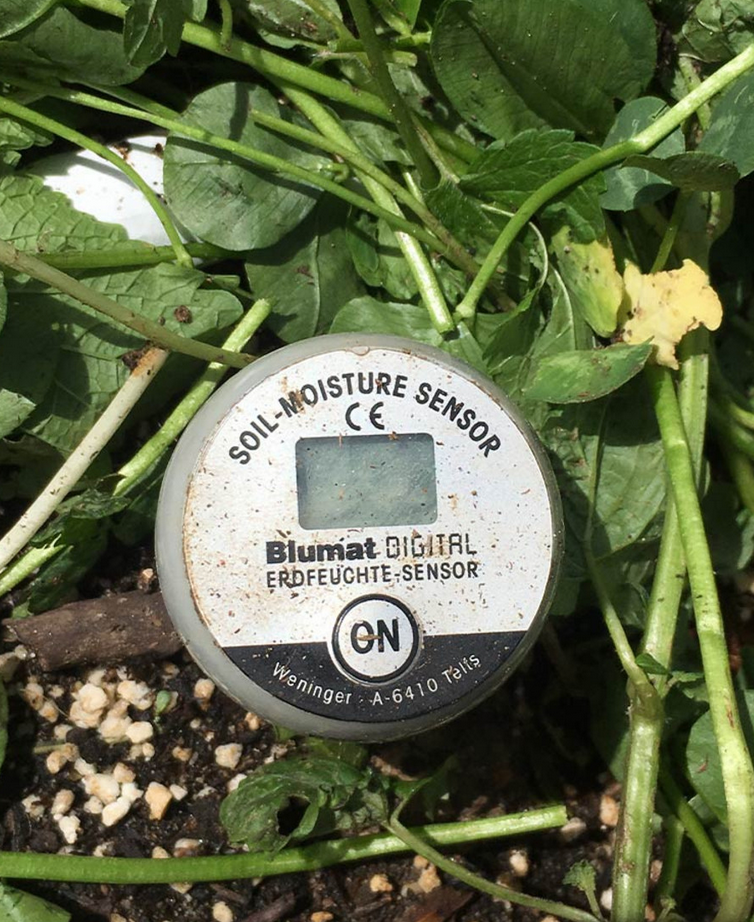Why Every House Owner Needs a Moisture Meter: Trick Benefits and Functions
Why Every House Owner Needs a Moisture Meter: Trick Benefits and Functions
Blog Article
The Ultimate Overview to Dampness Meters: A Comprehensive Summary and Just How They Can Save You Money
Moisture meters offer as indispensable tools in spotting and keeping track of moisture content in materials, helping in avoiding expensive damages and making certain the top quality of products. Comprehending the subtleties of various types of dampness meters, their applications, and the possible cost-saving advantages they use can be a game-changer for services and specialists alike.
Kinds Of Moisture Meters
One common type is the pin-type dampness meter, which determines the electric resistance in between two pins inserted right into a product. Pinless dampness meters, on the other hand, usage electro-magnetic sensor plates to scan a bigger location without triggering damages to the material's surface area.

Additionally, there are likewise specialized moisture meters created for details products like dirt, grain, or hay. These meters offer exact wetness analyses tailored to the distinct properties of the material being checked. Infrared dampness meters determine the thermal buildings of a product to determine its moisture material non-invasively, making them beneficial for applications where pin or pinless meters might not appropriate. Comprehending the various types of dampness meters readily available can assist sectors pick one of the most ideal device for their certain wetness dimension requirements.

Benefits of Using Moisture Meters
Wetness meters provide vital advantages in accurately evaluating and keeping an eye on dampness levels in diverse materials and atmospheres (Moisture Meter). One of the primary benefits of utilizing dampness meters is the avoidance of possible damages brought on by excess moisture. By spotting and attending to high dampness degrees early, moisture meters help to stop mold and mildew development, rot, and structural damage in structures, saving both money and time on repair services. Furthermore, wetness meters aid in guaranteeing the top quality of products throughout building and construction or manufacturing processes. By accurately gauging moisture material, these devices assist maintain the honesty of wood, drywall, concrete, and other materials, decreasing the threat of failures or problems.
In addition, utilizing moisture meters can lead to increased energy efficiency. In agricultural settings, dampness meters play a critical role in maximizing crop yields by allowing farmers to keep track of soil wetness levels and make notified watering decisions.
Just How to Select the Right Wetness Meter
When choosing a moisture meter, it's vital to ensure that the meter is appropriate for the particular product you will be screening. Different products have varying electrical properties that can impact moisture analyses, so picking a meter developed for your material is important for accurate outcomes. By meticulously assessing these aspects, you can select a wetness meter that satisfies your demands and supplies precise moisture measurements for your jobs.
Appropriate Techniques for Moisture Meter Usage

Price Financial Savings Through Moisture Meter Applications
Just how can the tactical usage of wetness meters bring about considerable cost savings throughout various markets? Moisture meters play a vital role in expense savings by protecting against prospective damage and ensuring quality assurance in different sectors. In the agriculture sector, wetness meters help in figuring out the optimum time for harvesting plants, avoiding over-drying or excess dampness that can influence the end product's high quality. This exact monitoring assists farmers prevent unnecessary losses and optimize their return.
Similarly, in building, dampness meters aid protect against expensive damages by detecting wetness degrees in building materials, such as wood or concrete, which can bring about structural concerns otherwise attended to immediately. By recognizing issue areas beforehand, service news providers can take corrective actions to avoid extensive repairs or replacements, eventually conserving money and time.
Furthermore, in the food processing sector, wetness meters are necessary for checking product quality and ensuring compliance with security laws. By accurately determining wetness content in food items, suppliers can avoid putridity, preserve quality, and minimize waste, causing substantial cost financial savings. Generally, the strategic application of wetness meters is an important investment that can cause considerable expense reductions and improved performance throughout different sectors.
Conclusion
To conclude, dampness meters are beneficial tools for measuring and detecting dampness levels in various products. By making use of the ideal dampness meter and adhering to correct methods, individuals can successfully prevent costly problems brought on by excess wetness. Investing in a high quality moisture meter can result in considerable cost savings in the lengthy run by determining prospective issues early on and enabling timely remediation. Eventually, moisture meters are important tools for keeping the integrity and long life of products and frameworks.
Wetness meters offer as indispensable tools in spotting and keeping an eye on moisture content in products, helping in preventing pricey problems and making certain the top quality of items. Infrared moisture meters measure the thermal homes of a product to determine its dampness material non-invasively, making them helpful for applications where pin or pinless meters might not be appropriate.Wetness meters supply very useful advantages in properly analyzing and keeping an eye on dampness degrees in varied materials and environments. In this page agricultural setups, dampness meters play a vital role in optimizing crop yields by enabling farmers to keep an eye on soil moisture degrees and make educated watering choices.In conclusion, dampness meters are important tools for determining and detecting dampness degrees in numerous materials.
Report this page